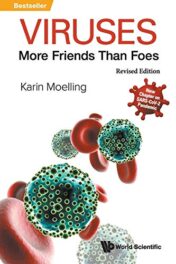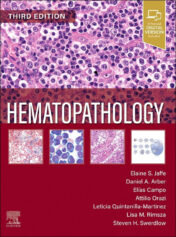“Her style is chatty, and just when you want to break into the conversation and ask a question, she’s thrown in an aside about a spat at a scientific meeting or discussed how we should dispose of our tissues when we have a cold. If this sort of mental gymnastics on top of some heavyweight science doesn’t put you off, you’ll like her book and learn much from it.”
Times Higher Education
“Moëlling uses her successful career in the discipline to structure much of the book and includes numerous interesting personal anecdotes to underscore her points. The writing style is conversational and will be accessible to non-scientists. ”
CHOICE connect
Reviews of the German edition:
“The author describes a real success story of viruses which is fascinating and unconventional. What is presented with respect to knowledge, personal evaluations, amusing anecdotes from everyday life in research, is impressive.”
Neue Zurcher Zeitung, Zurich
“I find your book excellent, instructive, and yet very entertaining.”
Emeritus Professor Charles Weissmann The Scripps Research Institute, Florida
“Very amusing are the descriptions of the author’s personal experiences with contemporary famous scientists. Rich with facts, this book is very worth reading also for non-specialists who would get to know the abundance of non-pathogenic viruses.”
Biology in Our Time
Coronavirus, AIDS, and Ebola: Viruses are normally defined as pathogens. Most viruses are, however, not enemies or killers. Well-known virologist and cancer researcher Karin Moelling describes surprising insights about a completely new and unexpected world of viruses. Viruses are ubiquitous, in the oceans, our environment, in animals, plants, bacteria, in our body, even in our genomes. They influence our weather, can contribute to control obesity, and can surprisingly be applied against threatening multi-resistant bacteria. The success story of the viruses started more than 3.5 billion years ago in the dawn of life when even cells did not exist. They are the superpower of life. There are more viruses on earth than stars in the sky. Viruses are everywhere. Some of them are incredibly ancient. Many viruses are hundredfold smaller than bacteria, but others are tenfold bigger and they were discovered only recently — the giant viruses, even deep within the permafrost where they were reactivated after 30,000 years.
The author talks about a completely new world of viruses, which are based on the most recent, in part her own research results. Could viruses have been our oldest ancestors? Have viruses even “invented” social behavior, do they lead to geniuses such as Mozart or Einstein — or alternatively to cancer? They can help to cure cancer. In this book, the author made a clear distinction between what is fact and what is her vision. This book is written for a general audience and not just for the experts. Its aim is to stimulate thinking, and perhaps to attract more young scientists to enter this field of research.
This revised edition is brought up to date by a new chapter on the SARS-CoV-2 pandemic.








